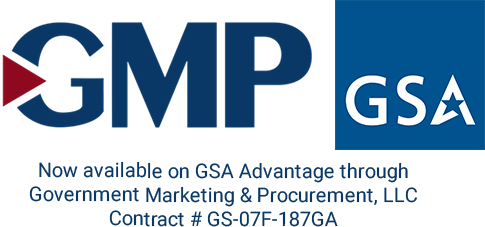HOW TO SECURE SCHOOL FUNDING AS WE RETURN TO IN-PERSON LEARNING
Did you know that 54 percent of teens today do not believe schools are equipped to respond effectively to emergency incidents or mental health needs? As schools prepare to return to in-person learning, teachers are considering ways to keep children safe and healthy. Many teachers are equally concerned, specifically about two large crises: gun violence and behavioral health. Despite the majority of schools having hybrid or online classes, at least 17 school shootings occurred over the last year. In addition, the need for increased behavioral health support is vast. Nearly 30 percent of parents say the pandemic has caused harm to their child’s emotional or mental health.
Thanks to national school funding sources like the American Rescue Plan Act of 2021, districts are receiving additional resources to address the safety and behavioral health challenges students face when returning to in-person classrooms. The $170.3 billion investment in education (from kindergarten to higher ed) is the largest single federal government investment in our schools to meet what educators are saying are the largest gap needs in students’ lifetimes. However, administrators are also considering ways to keep safety and wellbeing a priority with continuous resources. Private and community grants can help ensure your school has the funds to upgrade technology and obtain new programs to support students’ needs. But do you know where to start when applying and securing school funding? Status Solutions helps schools put safety first and secure needed funding and resources to maintain and upgrade technology. Here are our top three ways to help your school get needed funds and maximize each dollar.
1.) Audit your school’s current safety plan
Most schools have plans in place in case an incident occurs, however, plans easily become outdated and require updates on at least an annual basis. Elements of a school safety plan include a variety of technologies that typically have separate jobs, such as access control, fire and smoke detection, and security cameras. These are all important tools, but when siloed don’t create a holistic safety solution, rather, they only address a small set of safety concerns. While the list of valuable safety resources is quite extensive, gathering all technologies in one place and creating a plan for updating and consolidating them into one platform can pinpoint gaps and opportunities for schools to utilize grant funding. Status Solutions’ School Safety Assessment provides a checklist to compare your school’s current resources against. Once you identify areas in which your school can improve, you can begin your search for funding sources.
2.) Know what types of grant funding are available and the deadlines for each
While schools automatically receive a portion of their funds from the state and federal governments, there are many untapped funding sources that go unused every year at all levels. Work with your school administrators to find and track deadlines.
Knowing what funding options are available can help you take advantage of all available funding opportunities. At the federal level, schools can apply for unique grants through agencies like the U.S. Department of Education. In many states, special grants are available for safety and security purposes on a rolling or annual basis. For example, Ohio’s K-12 School Safety Grant Program provides up to $100,000 to individual schools for safety updates such as cameras, panic buttons, automatic door locks, and visitor badging systems. Contact your local government or department of education to learn about funding opportunities.
School safety organizations and foundations also provide charitable grants. Websites like schoolsafety.gov, grants.gov, Teacher Planet, GetEdFunding, and the School Funding Center are helpful resources to find and learn more about niche grants that can address specific school concerns. Learn more about foundation funding sources near you through a Community Foundations Locator or other search engines.
3.) Make sure the grants align with your school’s needs and put your best foot forward.
Once you find grants of interest, check to see if your school and its needs meet the requirements of the grant. Grant language can be difficult to understand sometimes. If you are uncertain about what the grant entails, consult with your school administrator, grant coordinator or an outside grant writing resource for assistance.
Once you confirm that the grant is a fit, work to obtain data and documentation to support the need for funding. Understand the grant funder to align your narrative with their priorities. Consider past grants that your school has received and in some cases, you can request funded grant applications to serve as successful reference points. If you applied for a grant and were denied, ask why to learn and adjust your case for the next round of funding. While each grant is unique, following best practices for grant writing can set your application apart from the rest.
Looking for a safety grant? Apply for Status’ Grant of Use
Status Solutions offers a grant to improve safety and communication in schools through the no-cost implementation of Situational Awareness Response Assistant (SARA). The technology provides staff the ability to request help from any web browser, which allows law enforcement to be called quickly and discreetly, and to send and receive alerts via various devices. Status is offering to provide this platform at no cost to any school district throughout the country that elects to receive the life safety technology. To learn more about the grant of use program, visit https://www.statussolutions.com/school-safety-grant-of-use/.
HOW TO SECURE SCHOOL FUNDING AS WE RETURN TO IN-PERSON LEARNING

